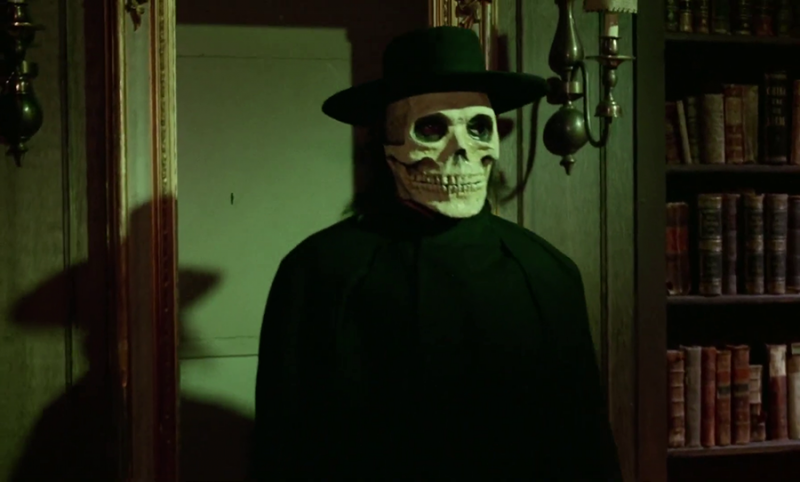
What a wonderfully goofy and fun movie. This is the first German Krimi film I have ever watched and I was quite surprised by its swingin’ style and colorful art direction. It’s ostensibly a murder mystery with elements of horror but mostly played for laughs. There’s nothing scary about a police investigator who practices ballet in his office or a man whose green skin is played off as, “oh, he’s Creole.” On top of everything, the movie is backed by a superb soundtrack by The Peter Thomas Orchestra. Highly recommended.

A Russian horror movie about a island convent that houses some sort of demon that is released when a stone amulet is pieced together. Everything is tinted with an orange candlelight glow and I think that’s about the extent of the “horror” here. It’s mostly overly long shots of wrinkly actors’ faces and nuns walking around with burning crosses. Everything feels cheap and all there is no sense of place. Just close shots of cave-like rooms.

Daniel Day-Lewis acts up a storm while talking in a weird deep voice. He main nemesis comes across as a summer stock theater actor in comparison. Preachers, oil barons and things happen.

Since the late 80s, Sparks has been one of my favorite bands. Despite their long career there isn’t much out there about their lives and history. Edgar Wright’s documentary attempts to fill in some of that info but, other than the details of their early life and first years as a band, I left the film not knowing much more than I already did about the band. I was hoping to see more about their lives off the stage. As is briefly mentioned, Ronald is known for his quirky collections of snow globes and Air Jordans and I would have like to delve deeper into his mind and interests. As it stands, the bulk of the long running time is devoted to giving an overview of their entire music output, one album at a time.

A dark comedy in the vein of Dear Reader in which historical events are depicted in their absurd reality. Ostensibly a comedy—a very dark comedy—about the political wranglings that transpired in the days after Stalin’s death. Executions are portrayed in a matter-of-fact manner and the fearful groveling of Stalin’s underlings comes across as Three’s Company style farce.

This was a PlanetMonk Kindle reprint of a 50s pulp novel. I was expecting tons of scary drug use but the whole “junkie” thing doesn’t really play a big part. There’s a murder and the main suspect is our protagonist’s girl, the titular junkie. This story oozes with smoky, drunk jazz atmosphere. I almost finished this one wanting to listen to jazz, but my willpower against annoying music is strong.

Poirot on a plane, a blow dart, and many suspects all with reasons to kill the old hag. I was sure I knew whodunnit until, as usual in these novels, a bit of extraneous information was revealed near the end that a reader would never figure out.

Found footage film about a group of Norwegian documentarians following a guy who hunts gigantic CGI trolls. Better than most found-footage stuff but the trolls look goofy and stupid. I think this wants to be scary, but that it is not.

I read this knowing the ending but I still think it is a top-tier Poirot mystery. The confined setting means there isn’t any jumping around to locations, just a series of interviews and the analysis of clues. Everything is laid out for the reader in an orderly fashion and when the killer was finally revealed I felt like I had actively participated in the investigation.

A mostly Poirot-free Poirot novel. It was okay, I guess, but pretty forgettable. What was I talking about?



